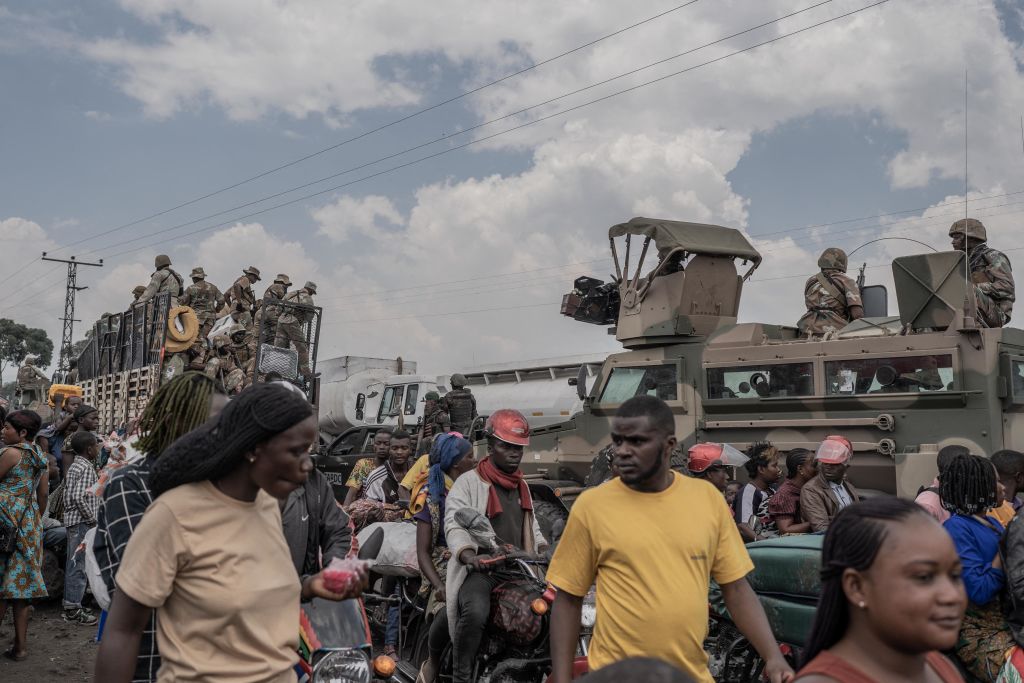Scale of SADC’s DRC Mission Raises Concerns
ADF STAFF
The deaths of two South African Soldiers deployed to the Democratic Republic of the Congo (DRC) have caused some observers to ask whether the Southern African Development Community (SADC) mission to rein in M23 rebels in North Kivu is properly equipped to do the job.
The South African National Defence Force (SANDF) Soldiers died when a mortar landed in their base in the eastern DRC. Three others were injured. They were part of a 2,900-member South African deployment, aided by 2,100 additional Soldiers from Malawi and Tanzania, that came to the aid of the DRC’s armed forces (FARDC) in December after DRC leaders expelled troops from the East African Community Regional Force (EACRF), saying they had been ineffective.
South Africa’s portion of the SADC deployment amounts to about 10% of its 30,000-member military, making it one of the largest foreign deployments in the country’s history.
Despite that, the SADC contingent is about one-third the size of the United Nations MONUSCO peacekeeping mission that has been operating in the eastern DRC since 1999 and will fully withdraw by December. The SADC deployment also is significantly smaller than the 6,500 to 12,000 Soldiers the EACRF originally planned to send to the region before being expelled after just more than a year.
Observers say that, despite recent training in jungle warfare, the SADC mission in the DRC, known as SAMIDRC, is likely under-equipped to confront M23 forces wielding surface-to-air missiles, GPS-guided mortars and other high-tech weaponry unusual for such militias.
South African military analyst Helmoed Heitman told Johannesburg’s The Citizen that the DRC deployment is likely to overstretch the SANDF without help from more partners, such as Angola, which fields the SADC’s largest army.
“How can anyone expect 5,000 or fewer troops to achieve what the roughly 15,000 in MONUSCO could not?” Heitman told The Citizen. “I see no real mention of what air support the troops will have — reconnaissance, mobility and combat. The reality is a force of 15,000 to 20,000, with real air support, would be needed.”
Many years of budget cuts are causing a disconnect between South African leaders’ desire to deploy the country’s military abroad and the military’s capacity to perform, according to Piers Pigou of the Institute for Security Studies.
“There appears to be increasingly a dissonance between what political commitments are made by our political leaders and the actual capacities on the ground to be able to deliver,” Pigou recently told South Africa’s Eyewitness News.
The SAMIDRC’s biggest weakness is its lack of sufficient air cover as budget constraints have grounded many of South Africa’s Denel Rooivalk attack helicopters, according to Pikkie Greeff, advocate for the South African National Defence Union.
“Anyone who knows something about combat knows that air support is very important, especially if you’re dealing with someone who hides in the jungle,” Greeff told SABC News recently.
In previous deployments against M23 rebels, the helicopters contributed to the rebels quickly seeking a cease-fire, DefenceWeb editor Guy Martin told Newzroom Afrika.
Greeff said the military lacks the funds to maintain the aircraft and keep them flying.
As the largest part of the SAMIDRC deployment, South Africa’s capabilities will be crucial to the success or failure of the mission, which has gone beyond peacekeeping to eradicating M23 and similar groups, Greeff said.
“There is no peacekeeping anymore,” Greeff said. “The new mission that’s underway is simply to neutralize these armed forces that are operating in the eastern DRC.”
Toward that end, the SANDF’s financial constraints could dramatically limit what the SAMIDRC can accomplish, South African military analyst Jasmine Opperman told SABC News. In that respect, she described herself as “skeptical.”
“I don’t have any high expectations, simply because the budget cuts are not allowing sufficient capability,” Opperman said.
She compared the prospects for the DRC mission to SANDF’s deployment against rebels in Mozambique’s Cabo Delgado province. In Mozambique, the military’s Special Forces were the most successful aspect of a deployment that faltered because of financial problems, she noted.
It’s unclear whether Special Forces will have similar success in the more complicated environment of the DRC, she added.
Another complication is the fact that rebel groups are deeply integrated into the communities of the eastern DRC, making it extremely difficult to know whom to trust, she said.
“If you are talking about our current deployment making a difference, it is not a silver bullet,” Opperman said. “They are being thrown into a complex environment that I’m afraid is going to be a long-term deployment with high casualties.”


Comments are closed.